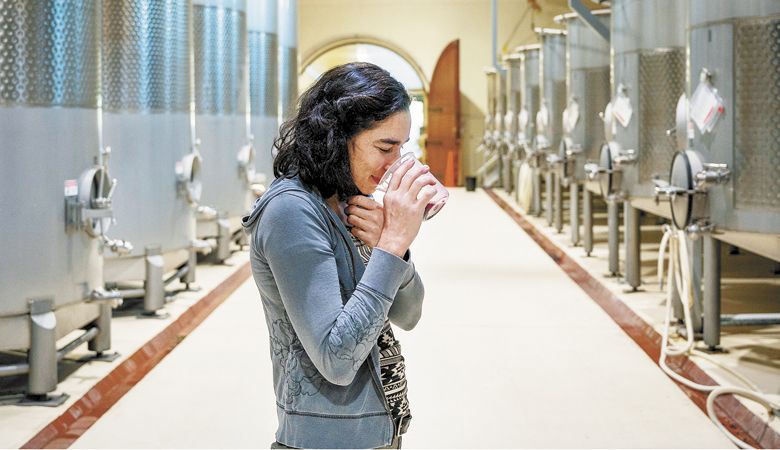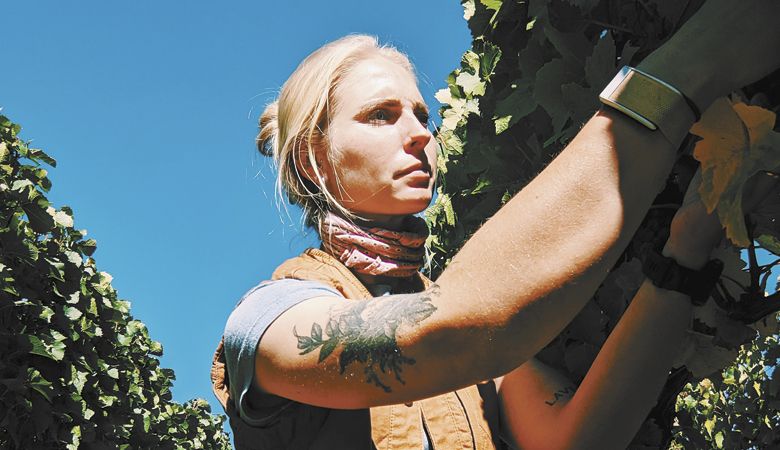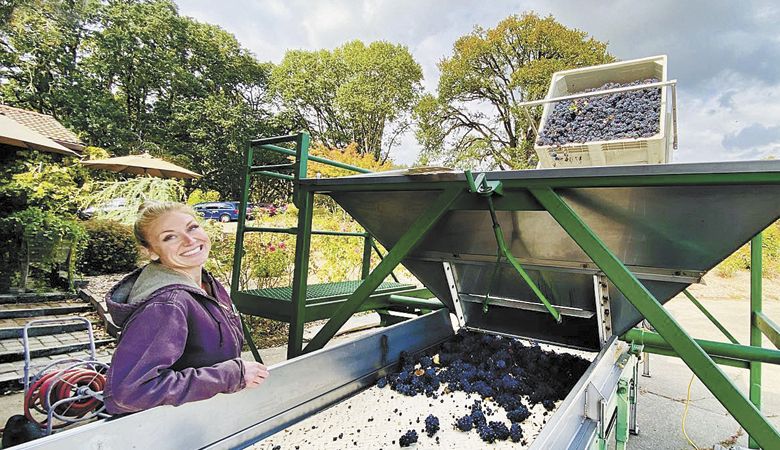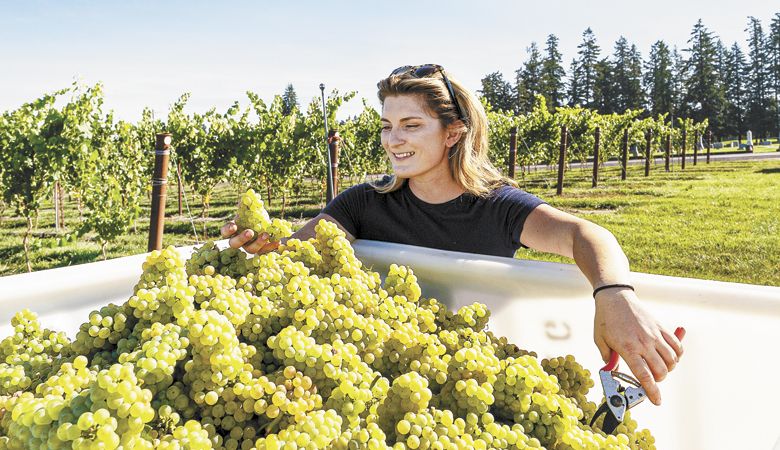Crushing It
From field to lab, vintage 2021 a success
Fortunately, wildfire smoke remained a nonissue this harvest; the same can be said for precipitation — when the rain finally fell in September, it helped extend hang-time in the Willamette Valley. The warm, dry growing season was punctuated with consecutive days reaching 100 degrees and above in June and August. The heat stress contributed to smaller clusters and berries, translating to more intense, complex fruit with little to no mildew or mold pressure. Yields may be down from this hottest summer yet, but the berries are extraordinary.
Vintage 2021 represents a cautionary tale, revealing the positives and negatives of such high heat and stark drought. As numerous growers, especially in Willamette Valley, continue to mostly dry farm, many now are showing more interest in strategic irrigation. Other possible future protections include spraying leaves with a clay solution, canopy adjustments, cover crop changes, less tilling and using soil fungi to help distribute water to the thirstiest roots.
As climate conditions continue to challenge wineries, the following four women offer their personal perspectives on what most are calling a “dream” harvest following yet another unusually dry, hot growing season.
View from the Lab
“The fruit this harvest has been absolutely beautiful. Perfect ripeness, the sugar-to-pH-to-acid ratio is great, and amazing fruity flavors are shining through,” says Leah Lyon, King Estate’s laboratory manager. She and her lab team monitor the Eugene winery’s quality control, running analysis over the entire process, from examining sample berries to helping predict optimum pick times, all the way through to post bottling. When fruit comes in, the group analyzes juice to get base chemistry numbers for each fermentation.
All through fermentation, Lyon and her co-workers track progress of the juice-to-wine transformation, tracking primary (sugar to alcohol) and secondary (malic acid to lactic acid) in the progressing wines. “Secondary ferment will make the wine more stable and soften the palate,” she explains.
During these times of labor scarcity, the lab group has really stepped up with each lab member taking on additional duties. “For me, I’ve learned more about management, including work order and grape processing,” she says with a smile. Lyon sums up her team’s buoyant feeling: “This is a super harvest. The 2021 fruit is stunning.”
Hitting the Bull’s Eye
Accurate crop estimation and prediction for the optimum moment to pick remain central services offered by vineyard management companies. Jessica Dunnam, viticulturist at Results Partners, happily takes on the responsibility. “It wasn’t easy this year,” she admits. In the wake of last year’s smoky harvest, acquiring accurate data to build predictions was a challenge.
“There can be huge variability out in the field,” Dunnam explains, “especially in a year such as this, where we experienced bloom-time rains that influenced set and resulting crop yield. The heat wave added to uncertainty. After gathering initial data in June and July in the vineyard, she took it indoors, in front of her computer, crunching numbers to offer client vineyard owners a clear path to harvest. She enjoys “the full circle” of gathering data, analyzing it and presenting the information.
Then comes the reality check: “We said you’d get 11.2 tons,” she mentions about one customer. “Now, how much did you really get?” She and her group are usually close, within 5% or better. It’s information an owner needs to accurately plan for harvest with the number of bins needed on site and truckloads to the crush pad.
Redemption Harvest
“This year is definitely a redemption harvest,” says Julia Cresto, Ponzi Vineyards enologist. “It’s a chance for all of us to fall back in love with winemaking again after the issues with smoke last year. The fruit looks pristine, and fruit quality is amazing, with such little powdery pressure.”
Cresto is in charge of tracking all fermentation analysis at the Sherwood winery, playing an important role in experiments with Pinot Noir and Chardonnay. Fruit from this vintage will be used “to help determine the way we make Chardonnay in the future,” she explains. “We’ve been mostly making it the same way since the 1980s. We’re looking at new ways, implementing more skin contact and yeasts suited to our wine style.”
She’s working closely in these trials with Luisa Ponzi, daughter of the winery’s founders, who continues as head winemaker since the enterprise was sold to Bollinger in May. “Luisa has been a great mentor,” Cresto says. “She taught me to learn from mistakes and not be afraid to experiment. She’s given me room to grow, and it’s very appreciated.”
Deep in Fruit
“We’re seeing deep, dark, dense fruit,” says Ariel Eberle, head winemaker of Yamhill Valley Vineyards outside McMinnville. “There’s excellent aromatics and more seeds in the grapes than usual. Great structure.”
Her first variety to process this year was Pinot Gris. “It will be one of the best we’ve ever made,” she says. “I think we lucked out in the timing of summer heat spikes, which took place prior to veraison and didn’t damage the fruit.” Blending trials for this vintage begin in May or June. Eberle can’t wait.
“But if every summer ahead is like this one, we’ll see continued stress on the vines and less production,” she warns. “We’re fortunate. We have older, established vines with mature root systems and that really helped us. We all need to acknowledge the climate shift and be thoughtful in our actions.”














